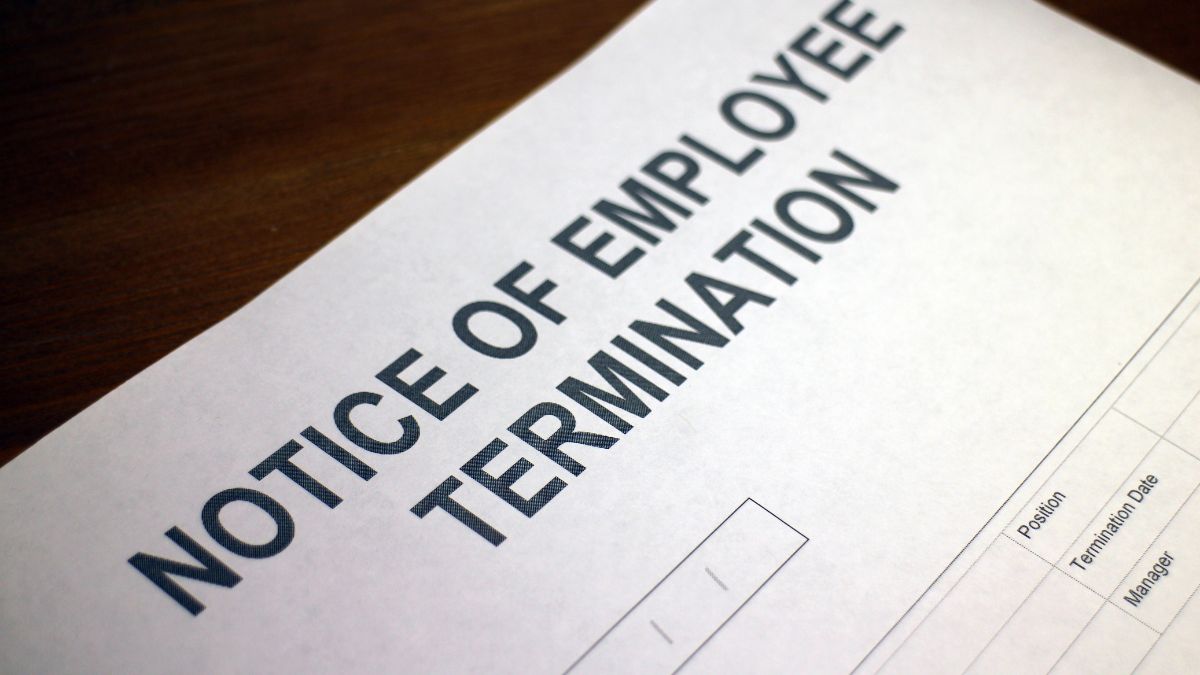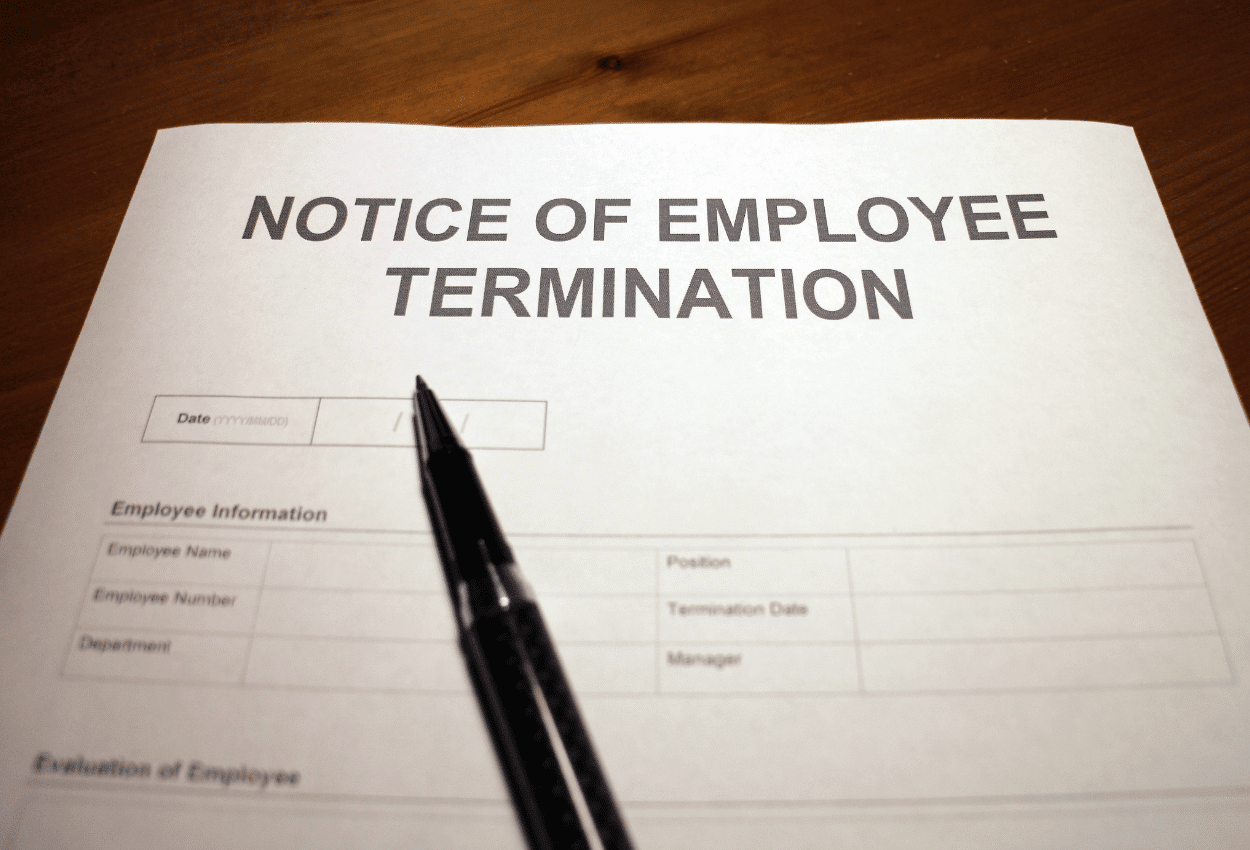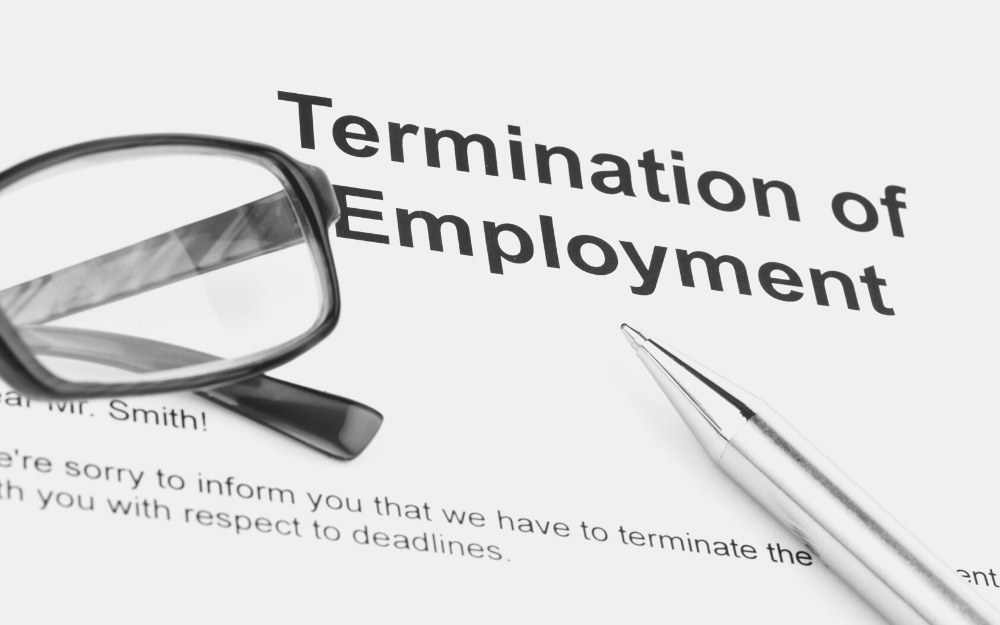
In the dynamic landscape of the modern workplace, organizations must navigate many challenges, one of which involves managing the sensitive process of employee termination. Crafting a well-defined and comprehensive termination policy is critical to human resource management, providing the framework for fair, transparent, and legally compliant procedures.
This article will delve into the essentials of how to create a termination policy, ensuring that organizations can navigate this delicate process with professionalism, empathy, and adherence to both legal requirements and ethical standards.
What Is A Termination Policy?
A layoff policy is more than just a list of rules; it's an important document that spells out how and why employees leave a company. This written outline spells out each step of the firing process, making it easy for both management and HR staff to follow. Being open and honest is very important. Employees should know exactly what can cause them to be fired and how toquit voluntarily.
When an employee leaves, it can be awkward and stressful for everyone. The termination policy gives you an organized way to deal with stress and makes sure you know what to expect. As an example, it talks about practices like walking outgoing workers off the property on their last day, not as an insult but as a courtesy and safety measure.
A termination policy, like other written rules in a company, is an important way to let people know how to act professionally when this inevitable part of work comes up. When companies deal with the details of how employees leave, they can create a workplace that values clarity, fairness, and respect throughout the firing process.
Why Should You Develop A Termination Policy?
People who hire people always have high goals for them, but sometimes things don't work out. You should treat your employees with care when it's time to let them go, whether it's because of poor performance, a problem with the business, or something else.
Here are some reasons why your company needs to formally fire an employee:
Compliance With Employment Laws
Companies already have a lot on their plates as they work to make their teams more effective and productive. Many have gone global or have employees who work from home. Having a written process and policy for firing employees helps companies cover important legal issues, like what makes a termination voluntary or involuntary. In this way, accusations of wrongful termination and lawsuits are less likely to happen.
Transparency As An Employer
Because firing someone is a sensitive subject, it can make workers feel very strongly. This includes both the workers who were let go and the people who were left behind to do the extra work. For everyone, this change should be less stressful, so companies can make sure their termination policy is as clear as possible.
"Make sure to be honest and empathetic,"says Lindsay Witcher, VP of practice strategy at Randstad RiseSmart, when you have to fire an employee from afar through a video meeting. "Be transparent, detailed and as clear as possible with your message,"she says. This should help keep things clear.
Managing Economic Layoffs
Having to fire people because they don't have enough work is one of the hardest things that can happen in a business. Any business can be affected by the market and have to lay off some or all of their staff. The Worker Adjustment and Retraining Notification Act (WARN)needs to be covered in the written policy on firing people. The Act says that companies with 100 or more workers must give 60 days' notice before stopping a plant or letting go of 50 or more workers at once. Check the laws in the countries where you do business.
Taking Performance And Disciplinary Action
A written policy encourages good behavior and spells out what will happen if bad behavior happens. As required by the company's rules, the process for reviewing employees' work and punishing them must also include details about firing them.
As an example, a formal warning is usually given for a first offense at work. Then, send written notices if the problem goes away. Even though firing someone should be the last option, it is possible to do so if they consistently do bad work or act in a way that puts the business and other workers at risk.
4 Types Of Employee Termination
A well-crafted employee termination policy goes beyond the basics, delving into the intricacies of different termination scenarios. Understanding and categorizing terminations is crucial for creating a policy that is both comprehensive and nuanced. Let's explore the most common types of employee termination:
- Voluntary Termination -As the name suggests, voluntary termination occurs when employees choose to leave the company on their own accord. This decision can stem from various professional and personal reasons, such as a lack of growth opportunities, personal issues, a toxic work environment, or insufficient employee development. Organizations experiencing a high rate of voluntary terminations should take proactive measures to address underlying issues for the well-being of remaining employees.
- Involuntary Termination -Involuntary termination transpires when an employer decides to end an employee's tenure for specific reasons. Low performance, violation of company rules, and unacceptable behavior are common grounds for involuntary termination. It may also be a consequence of disciplinary actions taken against the employee.
- Employment at Will -This termination type grants employers the authority to dismiss an employee at any time and place without providing a specific reason. Employment at will empowers employers to terminate employment contracts without justification. However, employees can contest such terminations if they suspect discrimination.
- Mutual Termination -Mutual termination occurs when both parties, the employer and the employee, agree to end the employment relationship amicably and without objections. Opting for mutual termination is often a cleaner and less legally complex solution, minimizing potential complications.
What Should A Termination Policy Include?
A well-constructed employee termination policy serves as a critical tool for human resources and management, offering the necessary guidance to navigate the complexities of ending an employee's tenure. Here's an organized breakdown of key elements that a thorough termination policy should encompass:
Explanation Of Different Types Of Terminations
To ensure clarity for employees, it is imperative to define various termination types. Voluntary termination, driven by personal or professional reasons, should be communicated effectively, emphasizing the importance of providing reasonable notice for business continuity. Involuntary termination, resulting from issues such as insubordination or breach of contract, requires a policy that outlines coaching, disciplinary actions, and potential support for overcoming performance barriers.
Additionally, addressing scenarios like job abandonment due to 'no shows' is crucial, establishing clear consequences and implications for rehire eligibility.
The Basics Of The Termination Policy
The core information in a termination policy should include coverage details, the process for warnings, and the responsibilities of those involved in the termination process. Whether managed by HR or other personnel, the policy must delineate the fundamentals to safeguard both employees and the company.
Anticipating concerns from both employees and management, the policy should address common questions, such as notice periods for departing employees and employer rights in disciplinary terminations. Striking a balance that benefits both parties and avoids potential legal pitfalls is crucial.
The Termination And Offboarding Checklist
Introducing an offboarding checklist is a valuable addition to any termination policy. Similar to onboarding procedures, a structured offboarding process ensures a smooth transition for departing employees. This checklist can cover the return of company property, guidelines for farewell events, scheduled exit interviews, and security-assisted departures.
By providing a clear roadmap for the employee's final days, organizations demonstrate a commitment to professionalism and empathy during what can be a challenging period.
Financials And Benefits
Addressing the financial aspects of termination is a key consideration. Many companies choose to offer severance packages, softening the impact of involuntary terminations. This may include a month's salary, continued access to benefits until COBRA coverage begins, and potentially additional perks like cash bonuses or stock options.
Preparing a well-documented severance package letter and reference letter contributes to a transparent and respectful termination process.
Additional Support
In extraordinary circumstances, such as the COVID-19 pandemic, providing additional support beyond standard severance becomes vital. Companies may consider more generous severance packages or even careeroutplacement benefits, offering up to six months of career counseling to facilitate a smooth transition for the departing employee.
A communication planfor the remaining team is equally crucial, informing them of expectations, task coverage, and any temporary adjustments until a replacement is hired.
Incorporating these elements into an employee termination policy ensures a comprehensive and compassionate approach to the challenging process of employee exits, fostering a workplace culture that values both its departing and remaining employees.
Other Considerations For Your Termination Policy
As you embark on the development of your termination policy, there are additional key considerations that can significantly enhance its effectiveness. Ensuring that your organizational employee termination process is both well-designed and thoughtfully managed requires attention to the following factors:
- Accessibility and Regular Review -It is crucial to make the termination policy easily accessible to all employees. Incorporate it into your employee handbook, utilizing digital formats on secure company wikis or file-sharing networks. Regularly review and update the policy annually to align with any changes in regulations or organizational dynamics.
- Compassion, Respect, and Dignity -Regardless of the circumstances leading to termination, treating employees with compassion, respect, and dignity is paramount. Recognize that termination can be an emotional experience, and a positive departure can significantly impact an employee's post-employment outlook. HR and management should strive to create an atmosphere that fosters empathy and understanding.
- Timing and Setting -Carefully choose the time and place for termination to minimize potential negative reactions. Opt for a Friday for terminations and schedule the meeting at the end of the workday when other employees are leaving or have left. Select a conference area near the building exit and arrange for another employee to assist with gathering the terminated employee's belongings as a gesture of courtesy. Recognizing the sensitivity of termination, consider Kathleen Bonczyk's advice on selecting the termination moment as a crucial opportunity to mitigate potential workplace violence.
- Documentation Process -In anticipation of potential legal challenges, document the entire termination process meticulously. Whether the termination is voluntary or involuntary, temporary or permanent, record every aspect of the process. Ensure that employees sign off on relevant documents, including communications, performance reviews, and disciplinary actions. This comprehensive documentation forms a critical defense against potential complaints or lawsuits.
- Rehire Policy Clarity -Define the rehire policy explicitly if your company allows for the rehiring of former employees. Outline eligibility criteria and the rehiring process in the termination policy. Typically, organizations permit rehires if the employee left on good terms and adhered to the required notification period. Clarifying these details in the policy establishes transparent expectations for both the organization and departing employees.
When Does The Process Of Termination Happen?
Companies usually do a few things before firing an employee. These are some of them:
- Reviewing the expectations established during their onboarding
- Having candid conversations with the employee
- Coaching the employee through steps to improvement
- Placing employees on performance improvement plans (or PIPs)
- Setting goals to help motivate the employee
If, after all of this, the employee doesn't get better or doesn't meet the goals set out in their PIP, then the employer will start the official firing process by telling the employee that the company has chosen to fire them and why.
This is just one example of when and how the end process can happen, though. It doesn't happen all the time. It depends on where you live, but some companies may be able to fire workers at any time and for any reason. In this case, the worker is employed "at will." Details like this should be talked over with workers and written down clearly in the employee handbook or manual so there is no confusion.
Steps And Checklist In The Employee Termination Process
Crafting a termination policy involves meticulous planning and consideration of various factors, depending on the reason for termination. Below is a structured framework encompassing the termination process and steps to be taken for different termination scenarios.
Termination Process Due To Poor Performance Or Conduct
- Identify and Document Issues -Documentation is a cornerstone of the termination process. Poor performance or conduct must be diligently documented, including performance reviews, manager notes, and feedback from the team. This documentation should also encompass corrective conversations, providing a comprehensive record.
- Alert Employees of Issues -Employees should be informed of any performance-related concerns, emphasizing the company's policies or code of conduct. Formal notices and warnings should be documented, including the date of notification.
- Performance Improvement Plan (PIP)-For performance issues, consider placing employees on a Performance Improvement Plan (PIP). This formal agreement outlines goals, milestones, and a coaching process to facilitate improvement. If no progress is made, the termination process proceeds.
- Administrative Details- Connect with HR, IT, and payroll to navigate administrative details. Draft an official termination letter outlining the reason and last day. Address company policy adherence, benefits, final paycheck, equipment return, and software access to ensure a smooth transition.
- Plan the Termination Meeting - Schedule a termination meeting with the employee, involving relevant parties, including HR or People Ops representatives. Ensure a professional and empathetic approach during this challenging conversation.
- Finalize Paperwork and Plan Next Steps -Finalize exit paperwork while assessing ongoing responsibilities and projects. Plan for replacements by drafting job descriptions and considering recruitment strategies.
- Instruct Employee on Next Steps -Conduct a meeting with the terminated employee, thanking them for their contributions, listing termination reasons, and explaining the dismissal timeline and benefits. Consider offering an exit interview for feedback.
- Revoke Access and Collect Property -Coordinate with IT to revoke access, secure confidential information, and collect company property. Ensure a seamless transition for both the departing employee and the organization.
- Communicate with Remaining Staff -Inform the remaining staff about the termination in a professional manner, respecting confidentiality and sensitivity.
Termination Process Due To Company Restructuring And Downsizing
- Review Laws and Regulations -Work with legal or HR teams to understand state labor laws regarding termination notice requirements. Confirm compliance and determine the necessary window of time for notice.
- Plan the Termination in a Compassionate Manner -Approach terminations with honesty and compassion, considering the shock employees may experience. Choose a considerate time and forum to convey the news, avoiding desensitized or cruel approaches that could impact brand reputationand employee morale.
- Administrative Coordination -Similar to other termination processes, coordinate with HR, IT, and payroll to address administrative details. Prepare official termination letters, communicate changes to benefits, and ensure a clear understanding of the final paycheck and any other entitlements. Guide equipment return or collection for remote or hybrid workers.
- Communication with Remaining Staff -Craft an official statement to communicate the organizational changes to the remaining staff. Maintain transparency while respecting confidentiality, and providing reassurance and clarity about the reasons behind the restructuring or downsizing. Address any concerns that employees may have and emphasize the company's commitment to supporting the affected individuals during the transition.
Best Practices For Employee Termination And What To Avoid
Navigating employee termination is a delicate process that requires a blend of empathy, professionalism, and adherence to legal and ethical standards. Here are some dos and don'ts to guide you through the challenging terrain of employee exits:
Do - Communicate Clearly And Transparently
Clear communication is paramount. Be honest about the reasons for termination, providing specific examples when appropriate. Transparency helps the departing employee understand the decision and promotes a smoother transition.
Don't - Provide Vague Or Ambiguous Reasons
Avoid vague explanations that may leave the employee confused or disgruntled. Vagueness can lead to speculation and rumors, potentially harming morale among the remaining staff.
Do - Plan And Prepare Thoroughly
Thorough preparation ensures a well-organized and respectful termination process. Plan the termination meeting, gather necessary documents, and coordinate with relevant departments to address administrative details promptly.
Don't - Rush The Termination Process
Rushing through the termination process can lead to oversights and increased emotional distress for both the employee and the team. Take the time needed to ensure a comprehensive and well-executed termination.
Do - Treat The Employee With Dignity And Respect
Approach the termination with empathy and respect for the individual. Acknowledge their contributions, express gratitude, and emphasize that the decision is about the position, not the person.
Don't - Display Disrespectful Behavior
Avoid disrespectful gestures, language, or attitudes during the termination meeting. Treating the departing employee with disrespect can lead to negative repercussions, affecting the organization's reputation.
Do - Offer Supportive Services
Provide information about available support services, such as career counseling, outplacement assistance, or access to employee assistance programs. Offering a helping hand demonstrates a commitment to the employee's well-being.
Don't - Neglect Emotional Support
Don't neglect the emotional toll that termination can take. Even if the termination is due to performance issues, acknowledging the emotional aspect and providing resources for support can contribute to a more positive departure.
Do - Document The Termination Process
Maintain thorough documentation of the entire termination process. Keep records of performance reviews, disciplinary actions, and communications leading up to the termination. Documentation serves as a defense against potential legal challenges.
Don't - Forget To Document Important Details
Neglecting to document crucial details can pose a risk in case of legal disputes. Ensure that every step, from performance issues to the termination meeting, is accurately documented.
Do - Communicate Changes To Remaining Staff Professionally
Craft a carefully worded communication to inform the remaining staff about the departure. Maintain confidentiality as much as possible while providing reassurance and clarity about the organization's direction.
Don't - Share Sensitive Information Unnecessarily
Avoid disclosing unnecessary details about the termination to the broader staff. Respect the privacy of the departing employee and share only essential information that aligns with company policies.
Do - Conduct Exit Interviews (if Possible)
If the departing employee is willing, conduct an exit interview to gather feedback. Insights from exit interviews can be valuable for continuous improvement and addressing organizational issues.
Don't - Pressure Employees Into Exit Interviews
Respect the departing employee's choice if they decline an exit interview. Pressuring them can create discomfort and hinder the possibility of obtaining honest feedback.
Do - Provide Clear Information On Benefits And Final Pay
Clearly communicate the impact of termination on benefits, final paycheck details, and any other entitlements. Clarity on these matters helps the departing employee make informed decisions.
Don't - Neglect To Explain Benefits And Pay Details
Failure to explain benefits and pay details can create confusion and dissatisfaction. Take the time to answer questions and ensure the departing employee understands the financial aspects of their termination.
People Also Ask
Can An Employee Be Terminated Without Notice?
Yes, in many cases, employment in the United States is considered "at-will," allowing employers to terminate employees without notice. However, certain circumstances or employment contracts may require notice.
What Should Be Included In An Employee Termination Letter?
An employee termination letter should include the reason for termination, the last day of employment, details on benefits and final pay, and any relevant company policies. It serves as a formal record of the termination.
Is It Legal To Terminate An Employee For Poor Performance?
Yes, employers can terminate employees for poor performance, provided they follow a fair and documented process. This typically involves performance reviews, feedback, and opportunities for improvement.
How Can Companies Ensure A Fair Termination Process?
Companies can ensure a fair termination process by documenting performance or conduct issues, providing clear feedback to the employee, offering opportunities for improvement, and adhering to company policies and applicable employment laws.
Can A Terminated Employee Sue For Wrongful Termination?
Yes, a terminated employee can file a lawsuit for wrongful termination if they believe they were fired unlawfully. To mitigate legal risks, employers should document the termination process thoroughly and ensure compliance with employment laws.
Conclusion
In the realm of employee management, a termination policy stands as a cornerstone for fostering a healthy workplace culture. By establishing clear guidelines, adhering to legal regulations, and prioritizing transparency, organizations can navigate the challenges of employee termination with integrity.
Remember, the termination process is not solely about bringing an employment relationship to an end but is an opportunity to demonstrate compassion, fairness, and a commitment to the well-being of both departing employees and the organization as a whole. Continual evaluation and adaptation of termination policies will not only ensure compliance with evolving laws but also reflect an organization's dedication to creating a work environment that values respect, equity, and professionalism.



